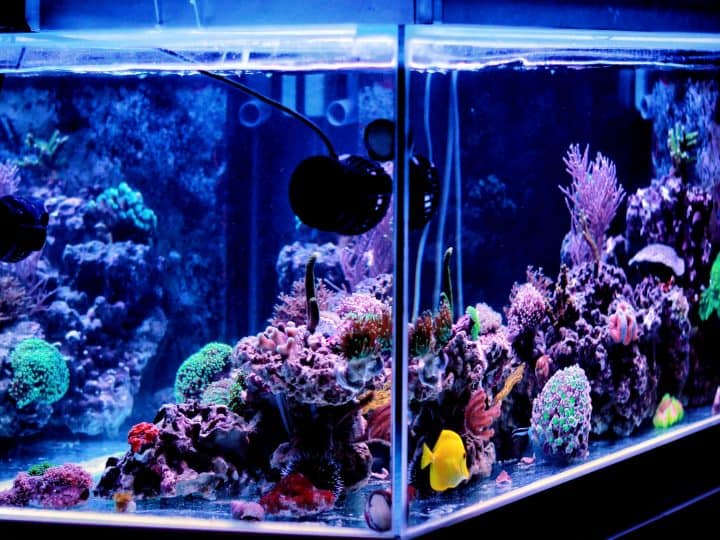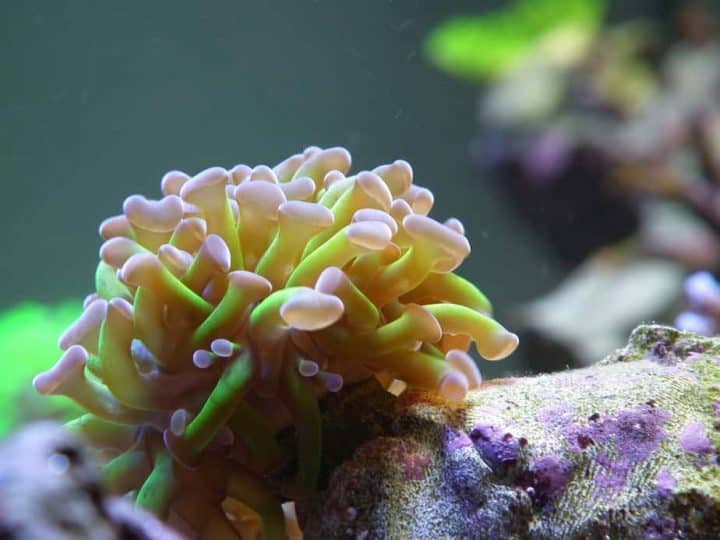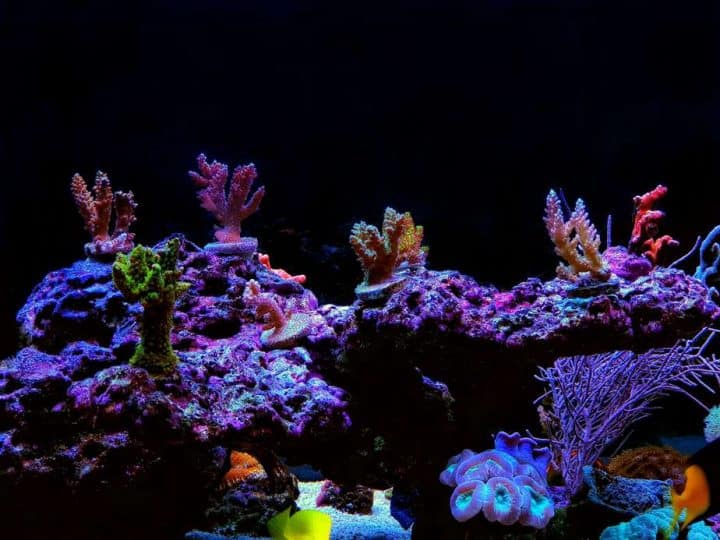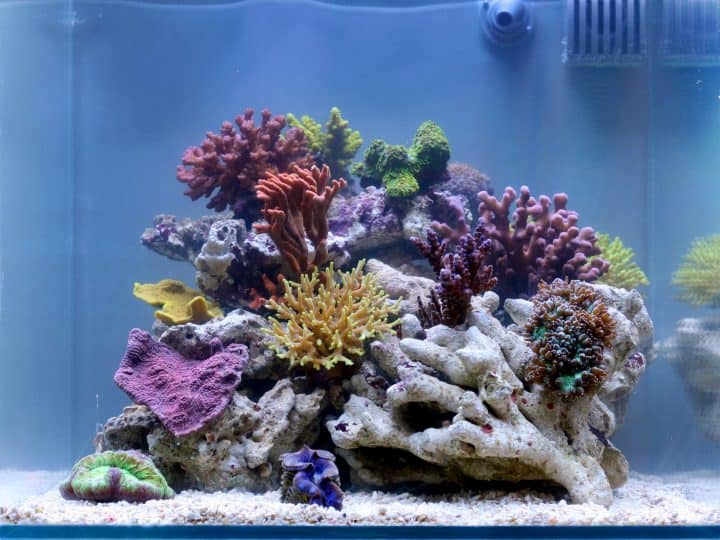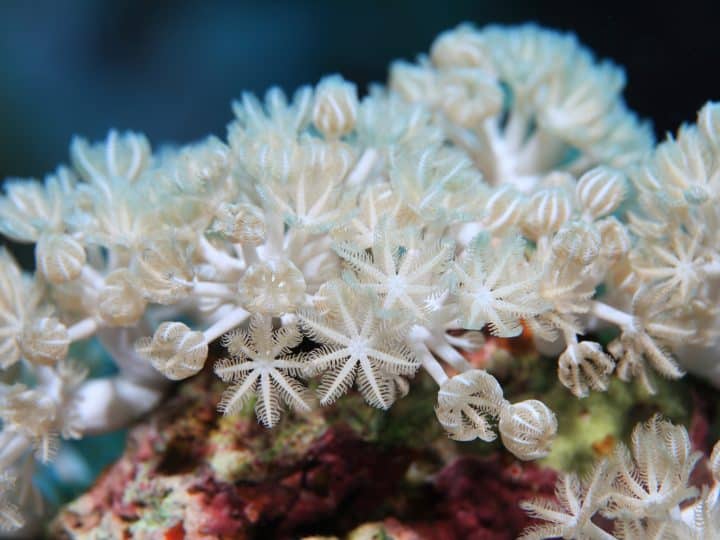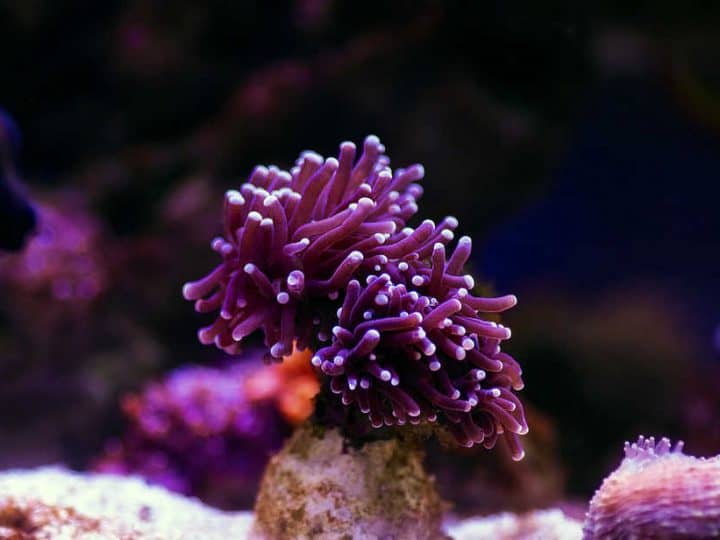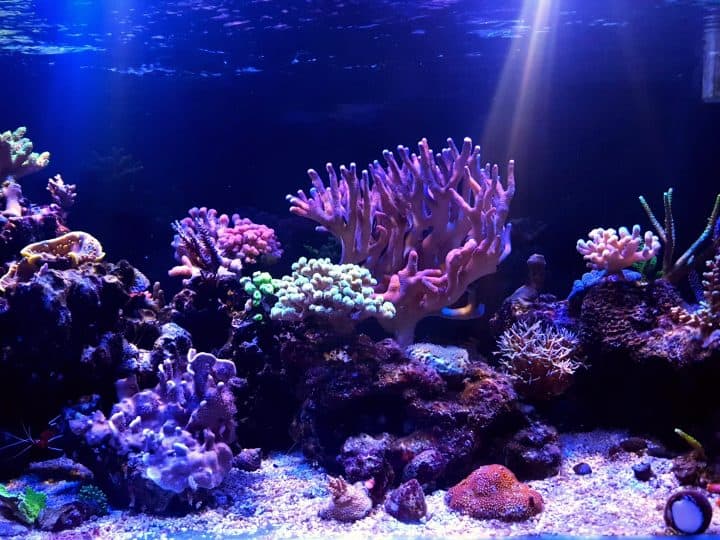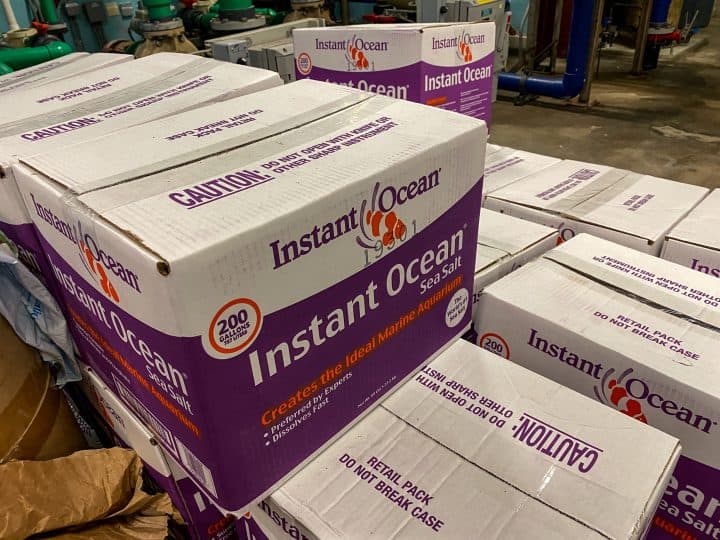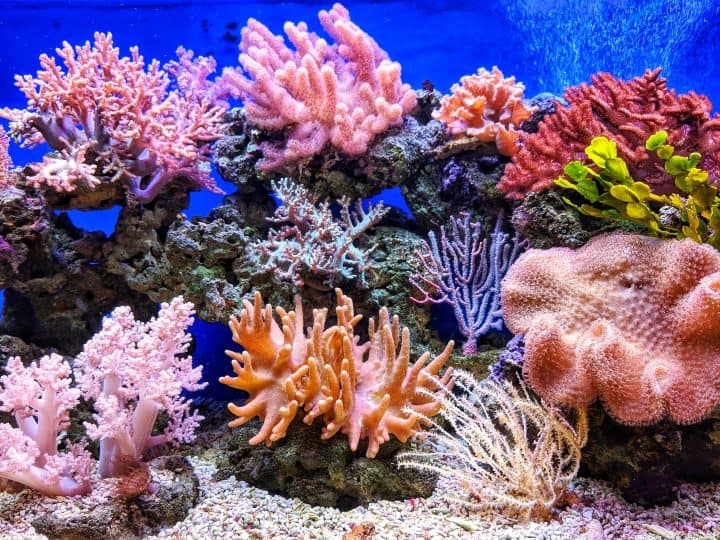Newbies often start with Toadstool coral as one of their first corals. This article will answer all your questions about the Toadstool coral: from placing to the propagation and water quality.
Basic Information
| Scientific name: Sarcophyton Glaucum | Common name: Toadstool Coral | Type of Coral: Soft |
| Average size: 2 to 25 inches | Optimal Spacing: 6 to 10 inches | Сomplexity: Easy |
In the rest of the article, you will learn about coral placement and optimum water parameters. Read on if you are planning to keep this coral or already have it.
Natural habitat and appearance
Warm and salted water of the Red Sea shelters about 45-50 known soft corals. Toadstool coral is a typical representative of soft corals, which can be found everywhere from the Red Sea to the Pacific Ocean.
It’s one of the most popular types of soft corals, which is also why it’s on my list of best beginner friendly soft corals. If you’re looking for some more inspiration, check it out here.
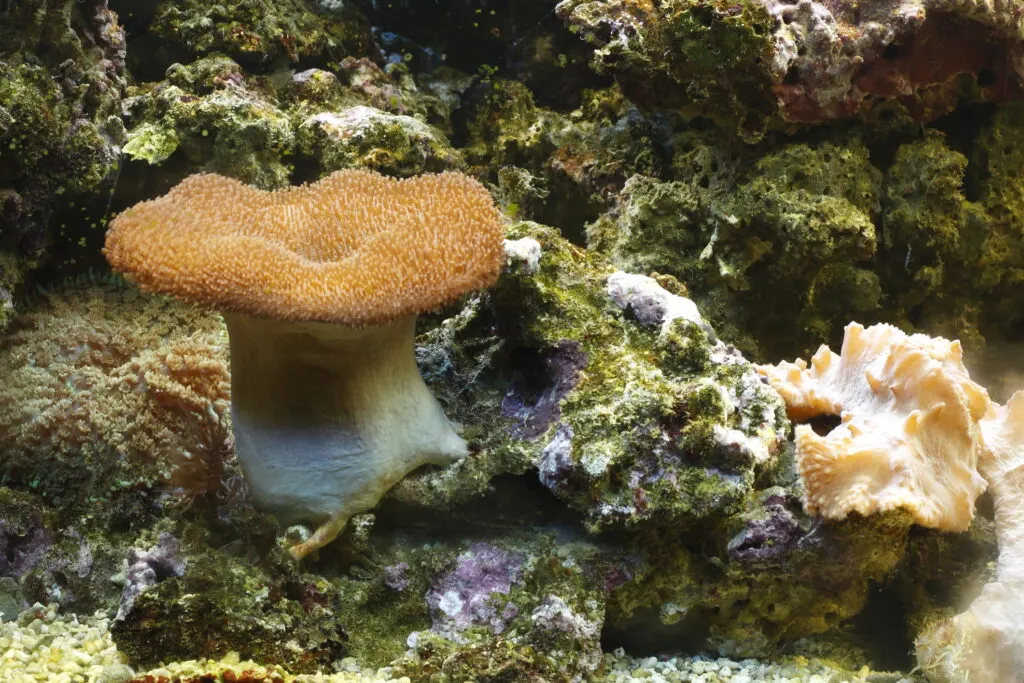
Structure Of Toadstool Mushroom Leather Coral
The word mushroom in the name refers to its outward resemblance to mushrooms. At the base lies a long and thick trunk, which ends in a ruffled cap, called capitulum.
The trunk varies in size or may not be present at all.
Polyps with 8 tentacles are located closer to the surface. Which is a dense protective layer instead of a solid skeleton. The layer looks like wet skin. Hence the word leather in the title.
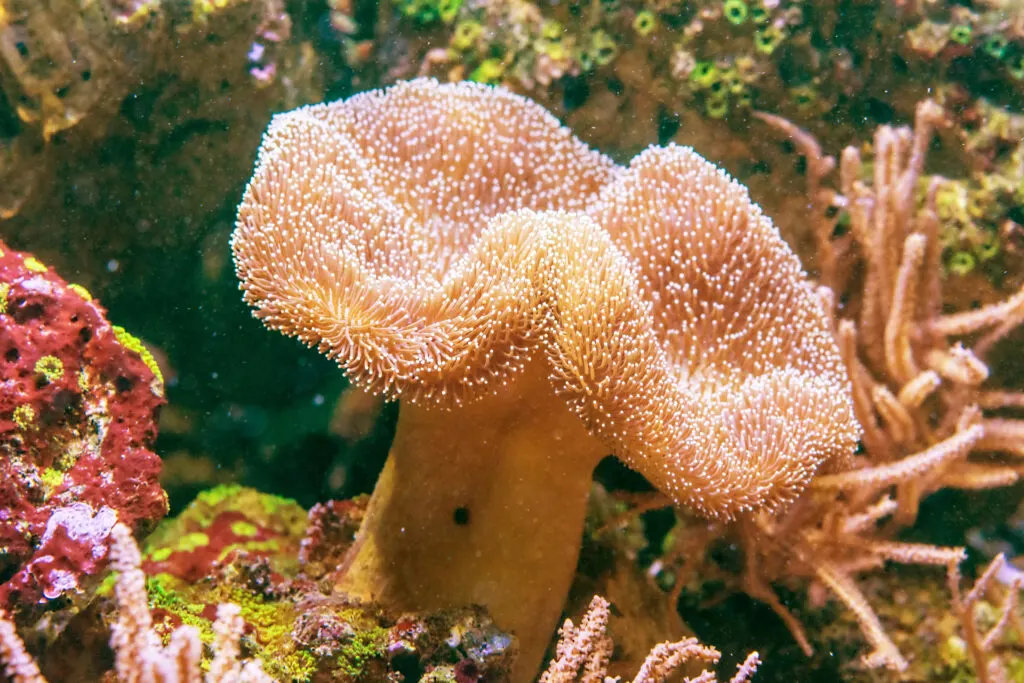
As for the color, it is usually brownish cinnamon. There are also green, yellow, and cream representatives. Trunk and capitula are usually the same color, unlike polyps, which are lighter. This gives extra beauty to this species.
Useful info: Sarcophyton, Sarcophyton Mushroom, Sarcophyton Leather, or Trough Corals — all of those are Toadstool coral.
How Toadstool corals live
Toadstool coral often organizes colonies and settles within the shallow to middle waters. Some varieties of Toadstool leather coral reach sizes up to 31-32 inches and live on flat areas of the coast, or on underwater slopes not far from it.
Biologically, the species is built on interactions with microorganisms.
This includes photosynthetic algae, with which they live in symbiosis. In exchange for shelter, the algae supply the coral with nutrients and help defend itself against pathogens.
Toadstool Coral Placement in a Reef Tank
Toadstool coral is a very unpretentious coral in terms of placement. It will take root and adapt to almost any environment. However, take care of 5 – 6 inches of free space around the newcomer.
In general, it will do well on the bottom of your tank, near rocks, or away from other species of coral.
Settle the coral and keep an eye on it. If after a couple of days it will not open (it is usually closed at first) gently move it around the tank.
For example, if it has been living on the bottom, move it 1-2 inches up and wait 2 days. Observe his reaction.
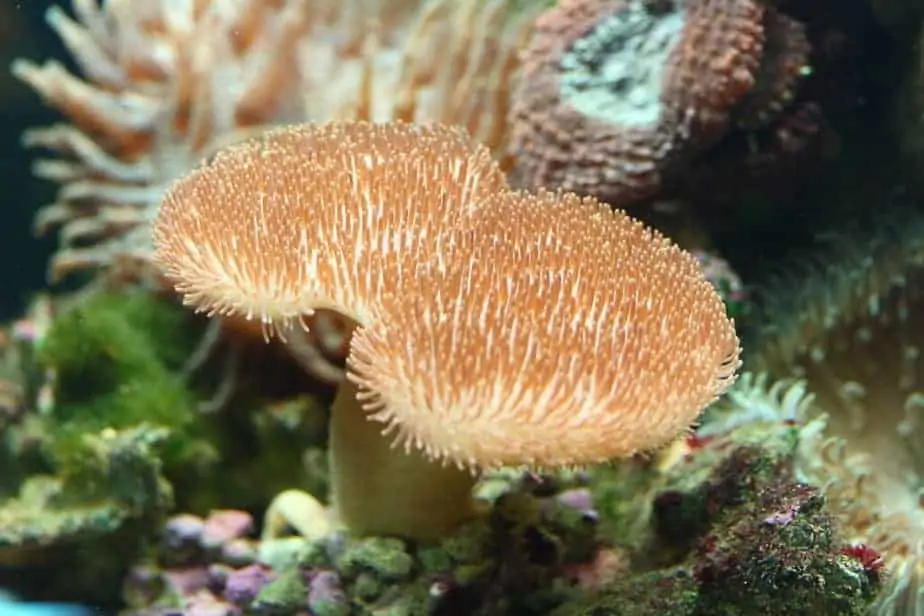
Useful tip: If you notice that your toadstool coral has started shedding, don’t worry. Coral will shed a membrane and “reborn” in about 7 days. This is done to clean the surface of dirt and debris.
Best Water Quality for Leather Toadstool Coral
Remember, you are not keeping corals or fish, it is all about keeping water. Proper parameters will contribute to the health and stability of everything inside the tank.
Imbalanced water composition may ruin all the efforts you put into the hobby.
Calcium
The natural level of calcium for Toadstool coral is around 420ppm( it is about 1% by mass of solids dissolved in the ocean). The value related to the salt level and constantly changes.
The suggested setting that fits toadstool leather coral is from 380ppm to 450 ppm depending on other parameters. In practice, the best way to narrow down the range is to experiment. For example, take 380ppm and gradually add 5-10ppm every other day.
Alkalinity
Alkalinity is not some stuff dissolved in water. Instead, it’s a combination of many things, forming a particular chemical presence.
For our purposes, it will suffice to know that alkalinity is essentially composed of bicarbonate and carbonate. Bicarbonate (HCO3-) is what corals absorb and convert into carbonate (CO3-) to build their skeleton.
I recommend using about 140 to 210 ppm for toadstool corals. This is an average value that can be experimented with further.
Depending on the corals and fish you already have, your aquarium may have different bicarbonate needs. Do the same as with calcium. Take the lower limit and add alkalinity little by little.
pH (power of hydrogen)
Remember I told you about balance in the water? Well, pH is the essence of high-quality water. Toadstool coral requires a pH of 8.0 to 8.4.
If you are not sure what it’s here is a quick lesson:
Bear in mind: alkalinity + acidity = pH
pH Regulation
To raise pH — add baking soda. To lower it, consider adding vinegar or lemon juice, or “pH down” products.
Useful tips:
- NEVER use commercial products with sulfuric acid, it may destroy your corals.
- Reduce carbon dioxide (CO2). If the air in the house is stilted and contains a lot of CO2, some of it will transfer into the water, increasing alkalinity levels. To avoid this, open a window. It is advisable to air out the house 2-3 hours a day. However, you should not do this when the weather is too cold or too hot. In that case, consider an air circulator or special tank device — scrubber.
- Schedule partial water changes (25%) monthly and plan smaller changes of 10-15% every week or fortnight. This will help to revive pH level to the natural state. This is especially important if you’ve been experimenting too intensively and your Toadstool coral is starting to mope.
Make sure to provide step-by-step pH changes. Skyrocketing from 7.5 to 8.5 within a 5 minute period can shock animals, causing death.
When it comes to pH, it’s best to keep it stable as much as possible. Don’t constantly change the pH of the water to chase the optimal pH.
Temperature and Flow for Toadstool Corals
Toadstool Coral requires average to strong water flow, and a temperature of about 76-82 degrees Fahrenheit.
Provide the coral with medium to high water flow. I found this out the hard way. Leather corals are usually closed when first meeting the aquarium.
This adaptation period may take several days, however, if the flow is directed at or just above the coral, the toadstool coral will cope with the stress more quickly and open up, showing all itsbeauty.
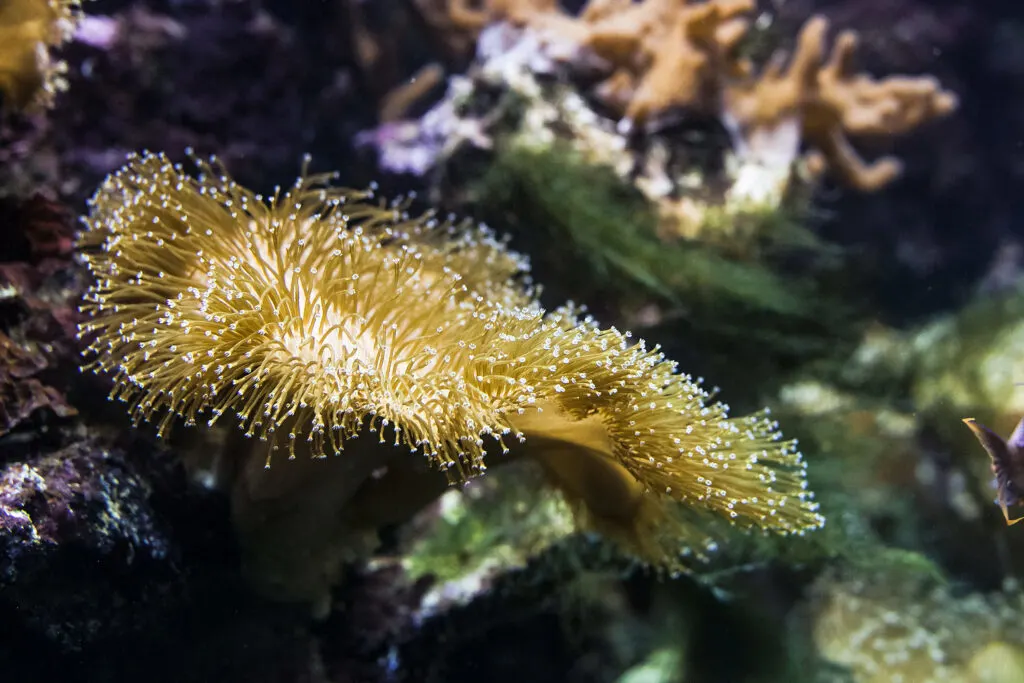
As for the temperature, it would be logical to keep the conditions comfortable for your toadstool coral. What could be better than a natural habitat?
The ocean in the Fiji area is heated to about 80F, so I suggest keeping the temperature between 76-82F
Ideal Lighting for Toadstools
Great light would be from 100 to 190 PAR. Toadstool coral lives in the sunny part of the ocean and is literally bathed in sunlight.
Therefore, it does not suffer from saturated light. Although, it is better not to abuse this property. As for spectrum, I suggest 400-470nm. T5, Halides, and LED work well for Toadstool coral.
This is a scientific source.
Compatibility with Other Species of Coral
You probably keep not only corals but other animals as well. They come in different temperaments and activity levels, just like people. Imagine that John wakes up at 6 a.m. and you go to sleep at 2 a.m. You probably wouldn’t get along… The same principle applies to your tank.
Some fish may annoy the toadstool coral, and trust me, it will not be one of those Shrek-style happy endings.
Here are some popular fish species:
| Easy | May Cause Problems |
|---|---|
| Boxfish | Butterflyfish |
| Clownfish | Triggerfish |
| Dragonettes | Seahorses |
| Gobies | Angelfish |
| Sand Sifting Gobies | Pufferfish |
| Surgeonfish | Wrasses |
This was my scientific source
Conventionally, corals can be divided into 3 categories when it comes to compatibility: aggressors, defensive and passive.
| Aggressive | Defensive | Passive | |
|---|---|---|---|
| Aggressive | Not compatible | Not compatible | Maybe |
| Defensive | Not compatible | Compatible | Compatible |
| Passive | Maybe | Compatible | Compatible |
Toadstool leather coral belongs to the defensive ones. In practice, this means that it will try to defend the area if necessary from neighboring corals, if they are too close, from fish and other aquarium inhabitants.
For example, cleaner shrimp, which like to clean the coral.
The defense mechanism comes down to the application of toxic chemicals. Toadstool releases a toxin into the environment that inhibits competitive coral growth,
damaging from a distance. Other animals are also not eager to come into contact with the poison, so they stay away.
Here is a short table of compatibility with specific corals:
| Easy | May Cause Problems |
|---|---|
| Frogspawn Coral | Birdsnest Coral. |
| Green Star Polyp | Finger Coral |
| Candy Cane Coral | Star Corals |
| Devil’s Hand Leather Coral | Flowerpot Coral |
| Trumpet Coral | Fungia Coral |
| Open Brain Coral | Montipora Coral |
I took some information from this scientific research.
Common Problems Related to Toadstool Leather Coral
If you have not dealt with leather corals, be prepared for them to be capricious the first time in the tank (unless you have perfect water, which is rare). Like most soft species, Toadstool corals are very sensitive to nitrate and phosphate levels.
Keep Nitrates Low
Keep the concentration of dissolved nitrates in your tank between 1 and 10 parts per million (ppm). Although many people use a value of 0, I do not recommend this, let me explain why.
Nitrates are a byproduct of the bacteria in the aquarium. The more waste the bacteria neutralize, the higher the level of nitrates in the water. 0 ppm conventionally means that the water is perfectly clean, I would say too clean…
Corals do not encounter perfect conditions in the natural environment. Softies like the water to be a little bit dirty.
In general, any value up to 20ppm will be safe but think twice before crossing the 10 ppm line.
Here is a scientific reference
Phosphates
Keep phosphates in your tankabout 0.02ppm. Phosphates are responsible for two functions. The first is algae control and the second is the effect on coral’s health.
Too much phosphate and algae will have a feast. An inadequate amount, on the other hand, will cause coral starvation.
Some owners benefit from values as low as 0.05 and 0.07ppm, while others swear by holding the mark at 0 to 0.01ppm. I like to keep things simple, so I chose 0.02ppm. Corals stay healthy, isn’t that the most important thing?
The source to be sure.
How To Reduce Nitrates and Phosphates
More often than not, beginners encounter elevated levels of nitrogen and phosphate. Let’s take a look at possible ways to combat this problem.
The easiest way to reduce nitrates is to do a partial water change. The crucial point here is to do it smoothly.
For 50ppm, a 10% change followed by a two-day period of adjustment is fine, while for 40ppm you may consider a 15% change.
Useful tip: stirring up the sand bed in an area that doesn’t usually get stirred up will leak nitrates into the water.
Phosphates are removed with a protein skimmer. Clean the device regularly so that it cleans the water of fish and other debris without problems.
If the skimmer setting does not help, you may be using too much food, or it is time to replace the aquarium with a larger one (too high population density)
Useful tip: There are other methods that involve chemical additives. I prefer to populate the refugium with macroalgae that use phosphates as food. Algae will bring balance and be a great decoration.
Feeding Toadstool Coral
The coral lives in symbiosis with algae, which traps the sun’s energy and turns it into food for the coral. There is no need for additional feeding
Provide enough light and everything will be tip-top. Details can be found above in the block about lighting.
How To Frag Toadstool Coral
Toadstool coral gives off a slippery goo when it’s cracking, so in addition to a little glue, you’ll need a rubber band. Use them to secure the frag within the tank. Don’t tie the smallie too strong. The tension should be just enough to cope with the flow of water not to tear apart the frag.
The time within a week should be enough for the frag to take root. Once it happened, remove the rubber bands. Then make sure to check the health of the coral every other day.
Summary
- Nitrates 1 to 10 ppm, Phosphates 0.02ppm
- Provide adequate spacing of at least 5 inches
- Shedding is natural for Toadstool, don’t worry.
- Compatible with most of the corals
- Keep lights and water flow average, or a little higher
Related Questions
How much does Toadstool coral cost?
The price ranges from $20-$150 depending on color and size. On average, you can expect to pay $40. Coral is widely available and popular, so knocking down the price a little may be appropriate.
My toadstool is dying, what to do?
To begin with, change the water immediately, and then measure the readings. If all is well, consider the movement of the coral. Perhaps it does not like the water flow or being in the sand all the time.
How can I help toadstool coral to open?
Closed Toad is a frequent occurrence when buying. Coral is under stress from a new home. He needs optimal conditions and some time to adapt. Check the lighting, water composition, and flow. Brown and green species are known for their love of increased water flow.

